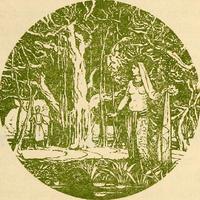Aicha Kandicha
Arabic ghouls are fascinating, in their folklore they are mostly depicted as foul ugly beasts that can transform into beautiful women. They fear iron and salt yet are extremely powerful in their desired landscapes. Ghouls are known for tricking men and using them as a source of entertainment and food. It has been said that ghouls can be killed with one swift blow from a sword, but strike a ghoul twice and it will never die until it is struck one thousand times after. While many ghouls are depicted as evil heartwrenching monsters this is not true for them all. One such ghoul is Aicha Kandicha.
Aicha Kandicha is a woman of many names: Aisha Kandicha, Lalla Aisha Hansnawiyya, or Lalla Aisha Dghugha; to name a few. She is mostly depicted in areas with streams, wells, and other bodies of water. Aicha Kandicha today is considered to be influenced by a real person, El Jaddiah. El Jaddiah was a Morrocon Freedom Fighter when Portugal was colonizing Morroco. With her deceptive beauty and cunning grace she lured soldiers out to be ambushed. She is an extremely popular part of Morrocon folklore as she presents the historical aspects of their culture.
From what we know about Aicha Kandicha, we are able to grasp what it means for women to be wanted as a means to curb sexual desire rather than people with their own agency. While depicting a woman as strong and capable of overcoming men, she must do so by using her body. Boudraa Nabil has a very persuasive way of showing this in her writing by depicting a womans cunning as “keid” here she writes “keid and its connection to women’s cunning as well as women’s sexuality is a complex and shifting terrain.”. Praising the cunning victories of women in folklore for their habitual domination of men but condemning the stories for making a woman’s sexuality her only true source of power.

